|
|
|
|
|
|
|
|
...by Neil Walsh
The Top 10
of 2002 SF
 10/
A Winter Haunting
10/
A Winter Haunting
by Dan Simmons
William Morrow (USA & Canada), hc, February 2002 /
HarperTorch (USA & Canada), mm, January 2003
Dan Simmons is an author able to write with flair in many different genres, but I personally think he's at his best when he's writing horror. And this is one of his best, a chilling sequel to his 1991 Summer of Night (also a great horror novel), narrated by the ghost of a child killed in that earlier book. I was hooked from the opening lines:
Forty-one years after I died, my friend Dale returned to the farm where I was murdered. It was a very bad winter.
I know what you're thinking.
And then the deceased narrator goes on to tell you precisely what you're thinking. This is one of those eerily clever novels, wherein, when everything finally clicks into place, you feel the chill of it all. Everything you've already read suddenly makes sense in a different light. Makes you want to read it all over again, right away, just to fully appreciate what the author has done.
9/ Ombria in Shadow (tie)
by Patricia A. McKillip
Ace (USA & Canada), hc, January 2002 /
Ace (USA & Canada), trade, February 2003
A top notch novel from this World Fantasy Award-winning author, possibly her best yet. Not only is this a great read, but it (like the past several novels by McKillip from Ace Books) also features stunning cover art by Kinuko Y. Craft -- a beautiful package all around.
In the words of SF Site's Margo MacDonald:
"The world of Ombria, as presented by McKillip, is an intriguing place. The
palace is a world unto itself, seemingly untouched by the filth, poverty and
brutality of the city. The city is populated with pirates, tavern-keepers,
cut-purses, orphans, and lower-class workers. Underneath the city dwells the
powerful sorceress, Faey, who has been around longer than anyone can
remember, who never comes above ground, and who, for a price, will use her
magic to meddle in the lives of those who dwell above -- if they can find
their way to one of her many hidden doors. The world she inhabits is part of
the shadow-world of Ombria; a glimpse of things and times that were. Filled
with ghosts and forgotten pieces of history, the shadow-world is barely
thought of by those above -- but for some it holds an irresistible
fascination."
And if you missed it last year, there's an equally handsome trade edition just arrived in bookstores that will no doubt prove an irresistible fascination if you give it a try.
9 /
The Separation (tie)
/
The Separation (tie)
by Christopher Priest
Simon & Schuster (UK & Canada), trade, October 2002
Christopher Priest is a long-established writer who was originally associated with the British New Wave. His first novel was published in 1970, although he is now probably best known for his World Fantasy Award-winning novel, The Prestige (1995).
The Separation is a novel that offers something of an alternate history, centred on variations in the development of certain events in the second world war, as studied by a current-day historian. As the novel progresses, the story takes on a rather surreal quality and raises some interesting questions for the reader. Clever, subtle, well-researched and well worth a read.
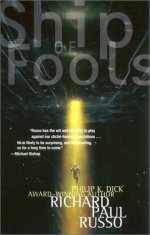
8/ The Ship of Fools
by Gregory Norminton
Sceptre (UK), hc, March 2002
This is an exceptionally clever first novel, which is really a collection of loosely linked stories based on the characters in a painting. It's an imaginative literary interpretation of the eponymous Hieronymus Bosch painting (click on the cover image to see a larger picture), using the same story-telling technique of Chaucer's Canterbury Tales -- except that these pilgrims are on their way to absolutely nowhere. Individual tales may be bawdy, moralistic, absurd or all of the above, but they're all extremely entertaining, ingenious, and often laugh-out-loud funny.
I'm very much looking forward to Norminton's next novel, Arts and
Wonders, which should appear later this year, also from Sceptre.
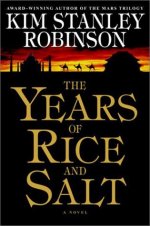
7/ The Years of Rice and Salt
by Kim Stanley Robinson
Bantam (USA & Canada), hc, February 2002 /
HarperCollins (UK),hc, March 2002
Robinson is at his best in a massive tale, spanning great lengths of time and great swaths of physical space, such as in his Mars trilogy. This novel, although very different from that series, is similarly massive. It's an alternate history in which the Black Plague of 14th century Europe pretty much did in the Europeans once and for all, effectively clearing a path for the unhindered development of the East -- and the Near East, and the New World, and Africa. From this premise, Robinson presents a series of novellas, set over a period of several centuries, in widely different locations of the globe, but with a recurring set of characters who are reincarnations of their former selves, hammering out different and similar issues each time.
In his review, SF Site's Rich Horton describes this as one of the most ambitious books in recent years. It is ambitious, and it is much more massive than its page count, but it's also a great book.
6/ House of Chains
by Steven Erikson
Bantam (UK, USA & Canada), hc & trade, December 2002
Speaking of massive, this is the fourth book in Erikson's epic Tales of the Malazan Book of the Fallen. As the series continues to grow in complexity, it also grows in popularity: last year Memories of Ice (Book 3) was #9, and the previous year Deadhouse Gates (Book 2) was #10 on this list. Unlike the previous novels in this cycle, House of Chains begins as a clear, relatively straightforward narrative following one central character. However, by the second quarter of the book, we return to the multiple inter-linked story lines we have come to expect from Erikson, following many different characters. And, as usual, he doesn't allow much slack in his storytelling -- keep up or get lost; those are your choices. I strongly recommend the former.
I personally think this is Erikson's best yet. I also believe this is easily the best fantasy series to appear in the past decade.
5/ Coraline
by Neil Gaiman, illustrated by Dave McKean
HarperCollins (USA & Canada), hc, July 2002 /
Bloomsbury (UK), hc, August 2002
Neil Gaiman is a perennial favourite with the SF Site, having previously appeared on this list with Neverwhere (#1 in 1997), Smoke and Mirrors (#2 in 1998), Stardust (#7 in 1999), and American Gods (#2 in 2001). With Coraline, Gaiman has given us something different -- a sort of Alice in Wonderland adventure with a young reading audience in mind. Coraline is a charming, quirky character, recently moved into a big old house with a mysterious locked door that eventually leads her into a different realm. And, because it's Neil Gaiman, there's a nice balance of dark creepiness and magical wonderment.
As SF Site reviewer Cindy Lynn Speer notes, Coraline makes a great read-aloud story and is sure to be enjoyed by readers of all ages.
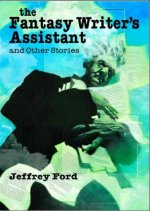
4/ The Fantasy Writer's Assistant
by Jeffrey Ford
Golden Gryphon (USA), hc, June 2002
This is a new collection of some new and some previously published short stories from another World Fantasy Award-winner. Many of the stories here are self-referential, drawing attention to the art and the artist so that the reader is never quite permitted to forget the mystical interaction between reader, story and writer. Following each story is a commentary from the author, which, in the context of the overall metafictional style, further enforces this relationship. All in all, an intelligent and thoughtful collection of some very entertaining stories.
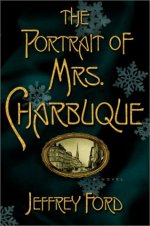
3/ The Portrait of Mrs.
Charbuque
by Jeffrey Ford
HarperCollins/William Morrow (USA & UK), hc, June 2002
An unprecedented result for the SF Site, one author has attained the same Top 10 list twice. In addition to the number 4 slot with his short fiction collection, Jeffrey Ford has also reached number 3 with this captivating novel. Set in Manhattan in the final decade of the 19th century, this is the story of a portraitist who accepts an unusual commission: he is requested to paint the wealthy and mysterious Mrs. Charbuque, although he is not permitted to ever see her.
In his SF Site review, William Thompson notes that Ford "has turned in another superlative story, rich in setting and imagery, designed to both confound and tantalize his audience, with a tale wondrously plotted and written with an intelligence at once playful yet serious. Possessing elements of mystery and horror... this is a work that bridges literature and genre, reaffirming again that the fantastic can offer much more than simple tales of trolls and dragons."

2/ The
Scar
by China Miéville
Macmillan (UK), hc, April 2002 /
Del Rey (USA & Canada), trade, July 2002
China Miéville's Perdido Street Station, winner of the Arthur C. Clarke Award and the British Fantasy Award, was voted number 1 book by the SF Site editors last year. This year, Miéville narrowly missed that number 1 status once again.
Although complete unto itself, The Scar is set in the same world as Perdido Street Station. However, this new novel is rather different. For one thing, it moves with the ponderous weight of the massive floating pirate city of Armada itself. Certainly there are moments when, like a sudden squall at sea, the action moves along at full speed -- but generally, the pace is rather slower. Stick it out; it's very much worth it.
As William Thompson says in his SF Site review:
"The book's greatest strength remains Miéville's vivid description and
fecund ability to create and imaginatively bring to life his highly exotic,
often perverse yet wonderfully revealed and realized cities, as well as the
cultures and mythography of Bas-Lag.... Anyone who has read Perdido
Street Station will instantly suspect there is much more going on here
in The Scar than simple or mere tale-spinning, however wonderfully or
inventively imagined. From title until the end, the nature and perception of
scars is a recurrent theme throughout, echoed in the author's cast of
grotesques."
All in all, this is a brilliant novel -- full of inventive ideas, complex and fascinating characters, and an underlying sense of mystery and dread that never diminishes.
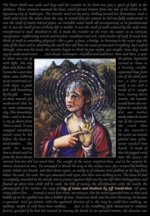
1/ City of Saints and
Madmen
by Jeff VanderMeer
Prime (USA), hc, May 2002 /
Cosmos Books, Wildside Press (USA, Canada & UK), trade, September 2001
The number 1 best book of the year, as recommended to you by the combined minds of the SF Site staff of editors and reviewers, is City of Saints and Madmen by Jeff VanderMeer. Interestingly, this book was number 4 on this same list last year in its earlier Cosmos edition. The Prime hardcover edition, released in 2002, was expanded to include 60,000 words of additional material. Both editions contain the Nebula Award-winning novella, "The Transformation of Martin Lake."
As SF Site reviewer, Ian Nichols, notes, City of Saints and Madmen "is more an invitation than a book. It is an invitation to wake up in Ambergris, after dreaming of Earth." Ambergris is a city of baroque beauty and creeping nightmare, as real as any place you've ever read about, dreamed of, or visited.
VanderMeer likes to push at the boundaries of conventional fiction, offering and testing other forms and other media -- the 2002 Prime edition includes a story entirely in code (with a sealed envelope containing the decoded story, for those less ambitious readers) as well as another tale embedded in the artwork of the cover itself.
Near Misses
How can we stop at 10, when there are so many great books? How could we resist? We can't. We never do. So, in the tradition of the SF Site Top 10 lists, here are some honourable mentions that very narrowly missed Top 10 status.
- #11 The Golden Age by John C. Wright(Tor, USA & Canada, hc, April 2002);
- #12 Light by M. John Harrison (Victor Gollancz, UK, hc & trade, October 2002);
- #13 The Birthday of the World and Other Stories by Ursula K. Le Guin (HarperCollins, USA & Canada, hc, March 2002 / Perennial, HarperCollins, USA & Canada, trade, March 2003);
- #14 Leviathan 3 edited by Jeff VanderMeer & Forrest Aguirre (Ministry of Whimsy/Prime, USA, trade, March 2002);
- #15 (tie) Stories of Your Life and Others by Ted Chiang (Tor, USA & Canada, hc, July 2002);
- #15 (tie) A Year in the Linear City by Paul Di Filippo (PS Publishing, UK, hc & trade, April 2002);
Other Honourable Mentions
Here, in no particular order, are a few other titles, only slightly further down the list, but also deserving of honourable mention:
- Schild's Ladder by Greg Egan (Victor Gollancz, UK, trade, February 2002);
- Everyone in Silico by Jim Munroe (Four Walls Eight Windows, USA & Canada, trade, November 2002);
- Dangerous Visions, 35th Anniversary Edition edited by Harlan Ellison (ibooks, USA, Canada & UK, hc & trade, October 2002);
- Any Time at All, The Lives and Times of Roxanne Bonaventure by Chris Roberson (USA, trade, September 2002);
- American Gods by Neil Gaiman (Harper, USA & Canada, mm, April 2002 / Headline, UK, mm, March 2002/ William Morrow, USA & Canada, hc, June 2001 / Feature, UK, hc, July 2001) -- as mentioned above, this one was number 2 on our list last year, but the mass market edition garnered some further notice this year.
I also want to highlight a couple of the better comic books/graphic novels that appeared in 2002 that didn't quite make it to the Top 10:
- Girl Genius by Phil and Kaja Foglio (Airship Entertainment, USA, hc & trade graphic novel, July 2002 / ongoing comic book series) -- mad science, romance and madcap adventure in a bizarre steampunk setting;
- Midnight Nation written by J. Michael Straczynski, illustrated by Gary Frank (Image Comics, USA & Canada, graphic novel trade, December 2002 / Image, Top Cow, 12-issue comic book series ended July 2002) -- the tale of a man who is ripped out of conventional existence and who must therefore follow a quest to save his own soul. One of the best self-contained comic book series in some time; for my money, better even than Alan Moore's League of Extraordinary Gentlemen (and Alan Moore is one of my all-time favourite comic book writers).
.
kontakt: sf@sinergija.com